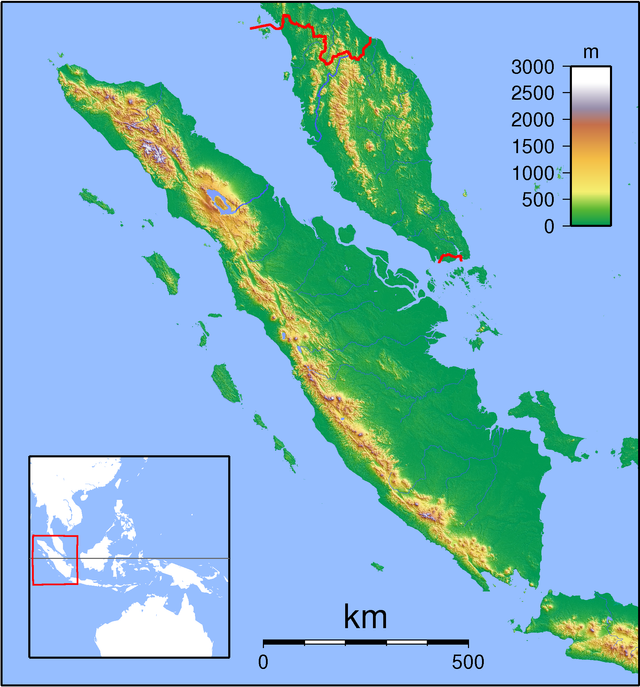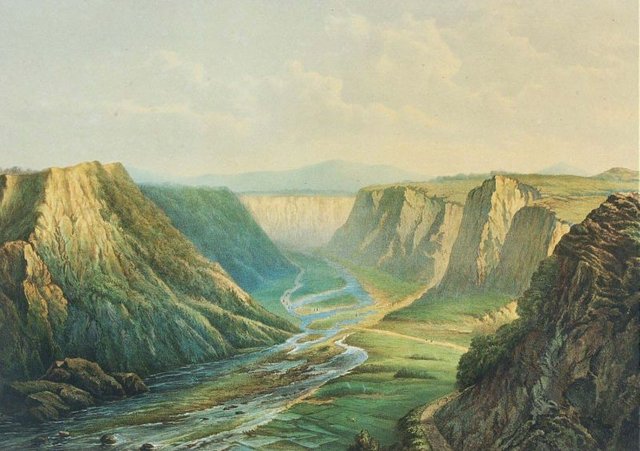Sumatra earthquake, is it still continuing?

Sumatera island (Bukit Barisan is one of Sumatra's fault lines). Image source wikipedia
In 2004 Aceh, located on the island of Sumatra suffered a devastating earthquake, the earthquake also triggered a tsunami that made hundreds of thousands of people killed, actually, there is one important lesson that we get from a disaster that is one of the areas prone to an earthquake is Sumatra island.
As we know that the earthquake is a land that shakes due to the movement of the earth's plate or can also be triggered by the eruption of the mountain, the data says that the western part of Sumatra island is the most vulnerable areas[source].
This is because a western part of an island of Sumatra near the collision of two plates of earth, namely the Indian ocean plate and the Sumatra plate, Indian Ocean Plate moves pressed down plates of an island of Sumatra.
At this stage the Mentawai islands and Nias are generally attached with rocks above it and as we know that, the pressure of the Indian Ocean plate will continue to press the undersides of the islands.
Well, I will give a simple example. TThe pressure imposed by the Indian Ocean plate on the Mentawai Islands and Nias can be likened to a large spring that continues to be pressed to the limit, if a spring bearing can no longer hold the press load then a cushion will be loose and bounce off, as well as the Mentawai and Nias Islands, the Mentawai and Nias islands will be bounced when the pressure of the Indian Ocean plate is no longer able to be retained by the retaining rocks of the island.
The Indian Ocean Plate presses the Sumatran islands off the south side and causes Sumatra to move slightly northward, as well as the southern side going opposite. The problem is that the northward impulse cannot be neutralized by subduction zones (large fault) and Mentawai island.
Every day the pressure received by the Sumatran plate grew until the stones that attached to the east and west of this fault line could no longer hold it until a tremendous earthquake to neutralize the pressure occurred suddenly. The western part of the Earth moves suddenly toward the north and the east moves towards the south.
The above explanation is the answer to why Sumatra is often an earthquake.
What happens during an earthquake in Sumatra?
The ground around the fault will move in the opposite direction and cause a crack of ground with a width of one to several meters.
Shocks will occur for several minutes.
There will be aftershocks on a smaller scale, up to a few days or weeks with increasing frequency until there are no more aftershocks.
Generally, large earthquakes will cause extraordinary damage.
Tectonic earthquakes usually can trigger more active volcanic activity and cause volcanic earthquakes.
One of the known fractures in Sumatra is the Semangko fault (the great fault of Sumatra), this fault formed in the millions of years ago when the Indian Ocean Plate crashed slightly on the west side of Sumatra. The major fractures of Sumatra stretch from Aceh to Lampung.

Ngarai Sianok (Sumatra fault). Image source wikipedia
Sumatra's major fault is a shear fracture and can easily be seen in Bukitinggi precisely Ngarai Sianok.
In other words, a fracture is an earthquake path that should be avoided, so what should we do to avoid an earthquake?
- We are only able to anticipate the earthquake.
- Know and learn the lane of an earthquake in your area.
- If it turns out that you are close to the earthquake lane then you should build a house that is resistant to earthquakes, such as wooden houses.
- Do not build houses and public facilities too close (around 5 KM) with earthquake lane.
- Arrange your furniture well, so at the time of the earthquake, the furniture and items that are in your home cannot be harmful, such as falling and so forth.
Can we know when will the earthquake again?
Keep in mind, earthquake is a natural process that repeats so that if there is an area that has experienced an earthquake then it is certainly in the future will experience an earthquake again, now scientists and engineers can predict earthquakes that have and will occur in certain areas can also estimate when the earthquake time.
The estimates of these experts are actually based on repeated earthquake processes and several other aspects.
Why should we know this?
As a Sumatran islander I should share this information with you and as an Engineer then I feel it is worthy to be known by other engineers especially the construction field, so with this information we can anticipate the worst thing we do not want in the future.
This is the only thing I can write on this occasion, over all the mistakes and lack of unintentional writing as a servant of God, I apologize.
Thanks to friends who have visited this blog and provided constructive comments, as well as scientists who are willing to sacrifice their time for a better civilization.
Active link reference:
www.wikipedia.org
www.wikipedia.org
Do you love science? by respecting the work of others and not plagiarism then you are welcome to join steemSTEM by using #science tags and joint our steemit chat channel

BEST REGARDS @kharrazi
Being A SteemStem Member
I witnessed how devastating the earthquake shook Aceh in 2004. At that time, I was in the yard of an office across the street in front of the Aceh Governor's Office in Banda Aceh. I see some of the roof of the Governor's Office building collapsed due to the earthquake.
Shortly afterwards, the tsunami waves devastated Banda Aceh, leaving so many people dead. I am very grateful to have managed to escape to the office building in front of Aceh Governor's Office.
After the incident, aftershocks have repeatedly shook Aceh. Even until 2018 there is still an earthquake in this province.
The information I read in a number of media, according to researchers from the Center for Tsunami and Disaster Mitigation Studies (TDMRC) of Syiah Kuala University (Unsyiah) Banda Aceh, in the southern part of Sumatra Island there is a subduction plate zone subduction, the Indo-Australian plate goes under the Eurasian plate. In addition, the Indo-Australian plate tilted, in the middle of Sumatra formed Sumatra fault from the bay of Semangko to Aceh. That is why the island of Sumatra is rich in earthquakes.
I agree with the one written by @kharrazi, that we all should always be wary of the earthquake. If we want to learn from local wisdom, Acehnese ancestors actually have given an example. They built houses on stilts using wood, so the houses of the Acehnese in the past remained strong, did not collapse despite the earthquake.
Thanks @kharrazi has written an article containing science that is very useful for many people about the earthquake, hopefully in the future everyone is more responsive to natural disasters, including earthquake disaster.
hopefully we become better and more alert in the future, thank you for dropping in this simple post :)
Good information @kharrazi
Yes, useful information like this should be known as people who live on the island of Sumatra.
Such as Aceh that has been shaken by a strong earthquake that claimed many lives. It should be a lesson for us to know more information about disasters that can happen anytime.
Thanks for sharing..
Good post !!
You're welcome @fachrulreza :)
Postingan yang sangat bagus Adun @kharrazi...postingan ini bisa dijadikan referensi bagi masyarakat yang tinggal di daerah yang sering terjadi gempa.
Postingan yang sangat bagus dan menarik @kharrazi.
Terimakasih juga telah memberikan informasi yang sangat penting buat kami semua.
Terima kasih informasinya bang
sebagai seorang arsitek dalam mendesain, memang harus mempertimbangkan hal yang demikian untuk keselamatan dikemuan hari.
Memang sih, Maut tidak ada yang tau tapi kita di tutuntun untuk berusaha agar mengantisipasi hal terburuk yang tidak kita inginkan terjadi di masa depan
You got a 1.68% upvote from @postpromoter courtesy of @kharrazi!
Want to promote your posts too? Check out the Steem Bot Tracker website for more info. If you would like to support the development of @postpromoter and the bot tracker please vote for @yabapmatt for witness!